September 2022
So, this isn't going to be perfect. For one, I'm going to update it as I go. There's no telling how long it will take or how good the end result is going to be. I guess we're both gonna have to trust the process.
The fundamental strategy of mass production is: save as much time as possible by grouping as many tasks together as possible. Real homebuilders for 70 years have done this by sending specialized construction subcontractors from house to house. But there is only one of me, so I must repeat the same task across the same houses as much as possible. If we group our steps together, we have the benefit of: switching inventory/hotbar space less often, using the same refs, and retaining memory of details better. Importantly, we must remember the most crucial part of saving time while building: repeat the same step, at the same time, across as many houses as you possiby can.
A lot of people don't believe me when I preach the benefits of mass production. They seem to think that "mass production" = rush job; WRONG! Mass production takes longer than you would spend on a normal project, because you're building a larger area... but at the end, you have more to show for it! A whole block, as opposed to a row of houses, could be in your future. Skimpy detailers need not apply: you're going to have to put in 120% effort just so people don't judge your shit for being mass produced! The people who usually grind out blocks of houses are legendary: KingChicken, BuildingWithOliver, Mickeykangs... but we don't have to be legendary to mass produce. We just have to be efficient!
As you can tell, mass production involves toeing the line on multiple high-level processes. I personally believe you should not attempt mass production while under the influence of large doses of hallucinogens or below the age of 18 (or both). Feel free to log onto BTESW and prove me wrong.
Selecting Your Site
I have decided to start a pretty complicated neighborhood of early 2000s luxury houses in Mesa, Arizona. This neighborhood may not have street view, but it does sometimes have enough Zillow listings to make it work.
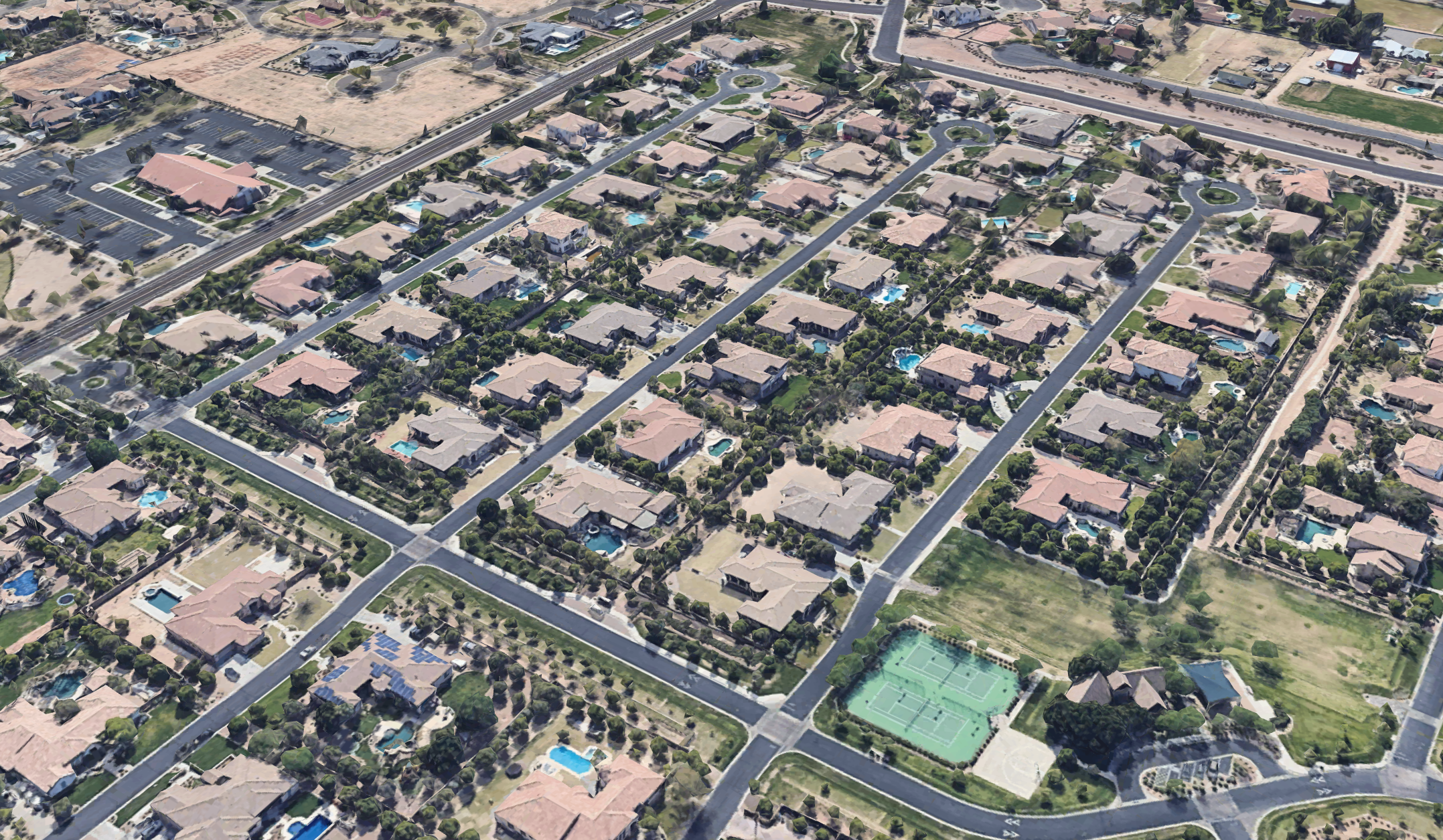
One block should be a fairly hefty mass production job. Let's see.
Researching Your Site
It's possible to go a little crazy when looking for information about the neighborhood you're building. Some people don't even bother with this step; you want to avoid being one of those people. Remember: you're trying to be one of the good mass producers. For even fewer of us, we simply know all these things because we have chosen to build our own house and dox ourselves on a server with 2k people. Let's just call anything that would potentially be PII "places we know well." When we build places we know well, we tend to rely too much on intuition or assume that we'll just know how to do it.
This is not the case.
Let's start with the easy stuff:
Zillow. You might get lucky and find full exterior photos for a couple of the houses you build. These are very useful, because you can build those yards even more accurately & get a better feel for the style of construction in the area. Sometimes, you will find large, hi-res exterior photos with good views of surrounding buildings. These are extremely useful, because often. If you win the lottery, the previous owner will have splurged for drone shots. These are indispensable, because you can literally recreate the exact same angle on the server & make a bunch of rubes [NSFW drunken rant redacted -ed.]
Redfin, Apartments.com & Bing Maps. For the more kooky of us. When our bog-standard Zillow & Google combo fail us, we turn to the store brands. Neverforget about the blue light specials, folks. Always check twice.
Now on to the hard stuff:
Finding the builder's website on the Internet archive.
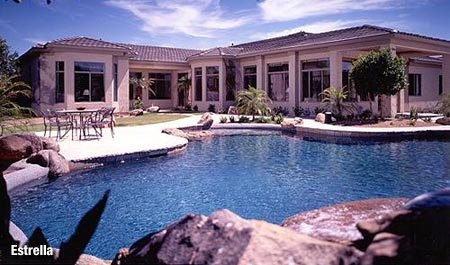
Please accept this delectable Y2K content as a treat.
If you're dealing with tract houses built after 2000, you may be able to find at least some floor plans or original graphics. To do this, you must know who built the houses, and to do this, you must either: use the county assessor to look through the deeds of the houses, if they are public record; or use state MLS data–search for the full address in quotes & MLS on Google—it sounds nuts, but you never know. Some third party sites may have some MLS information included in public listings. Most of these are airhead local realtors with link farm websites, but hell, copy-pased MLS data is copy-pasted MLS data. From there, you can find the builder's website pretty easily & see how far back it goes. Especially with newer neighborhoods, you will probably luck out.
Taking reference photos. Don't laugh. If this is a place you know well, it's easier than you think. If you can't drive yourself, ask your parents. If they really love you, they'll do it. If they won't do it, they don't love you. If you're old enough to drive yourself, but you can't afford gas: siphon some out of other peoples' cars at night. It's free!
"But why should I actually do all this fruitless searching? What would I really find?"
You'll find a reason to wake up in the morning & finish your builds.
Site Work
I have the benefit of LIDAR; you might not. If you want to learn Google Earth contour lines, don't bother. By the time you finish, the imagery will have updated, and it'll all be wrong. Ask me how I know.
This unhelpful section of the tutorial was brought to you by LIDAR. Thank you, Dean! If you want me to actually make a contouring tutorial, you are going to have to put a mf gun to my head
Outlining
- Fences & Walls (Property Lines)
- Roads & Sidewalks
- Houses
- Pools, Terraces, & Backyards
Always a good place to start. Some people do roads first; I don't bother. Getting some outlines down to get an idea of the scale of your project is never a bad idea...
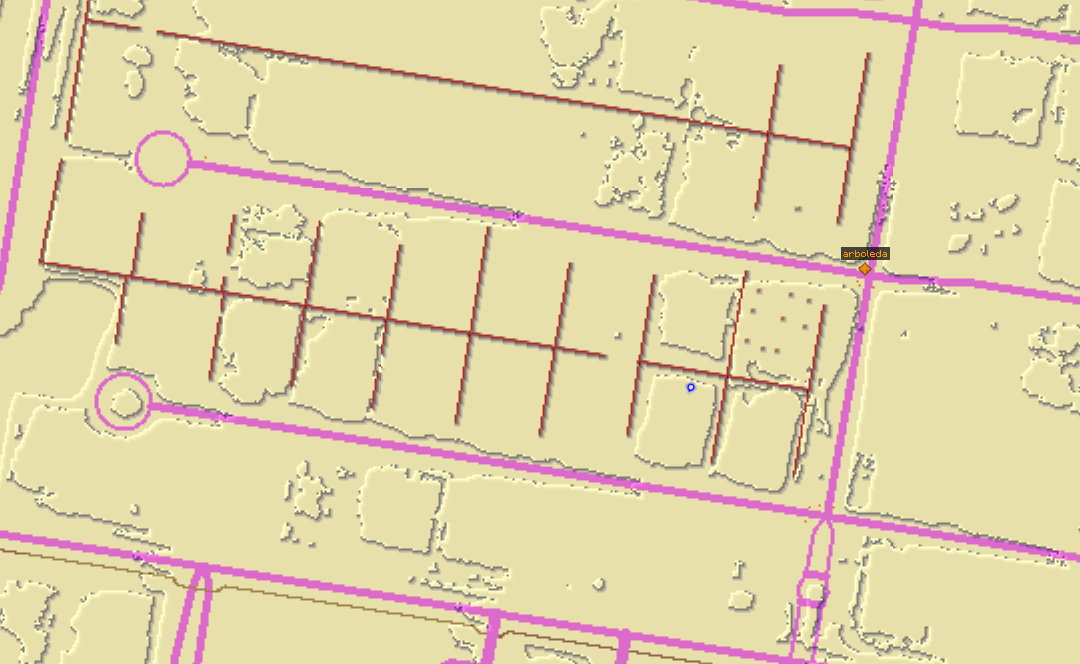
I got a little carried away there. This one block is all I need. 17 houses on one-half acre each. What am I getting myself into? No one builds piles this large on BTE anwyay.
I always hate starting roads. Asger tried to teach me, DBL tried to teach me. All have failed!
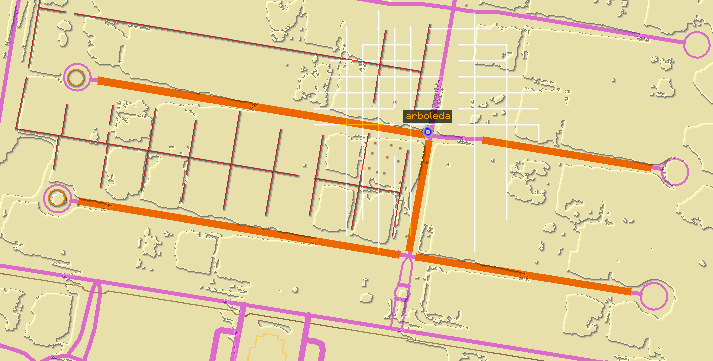
I got a little carried away again. My first step was filling in the long straight stretches with //sel poly. This is as far as I have gotten on the roads, because I really hate building them.
Next, I shall use //line and //sel poly many times to fill in the curved parts of the road, and add curbs and intersections. Then, I will fix my mix.
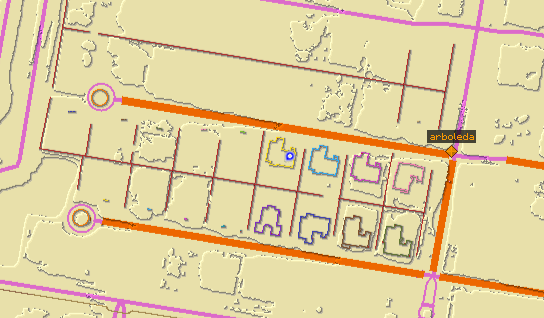
8 outlines down. I use red concrete to mark out "sus" tplls (Dil's words not mine) because, when I start making //lines, I can make judgement calls. I'm looking for walls that are parallel with tplls from Google Maps 3D view. Here's a top tip: Hold the control key and click+drag in 3D view to free rotate. I just learned how to do this and it has completely changed my life.
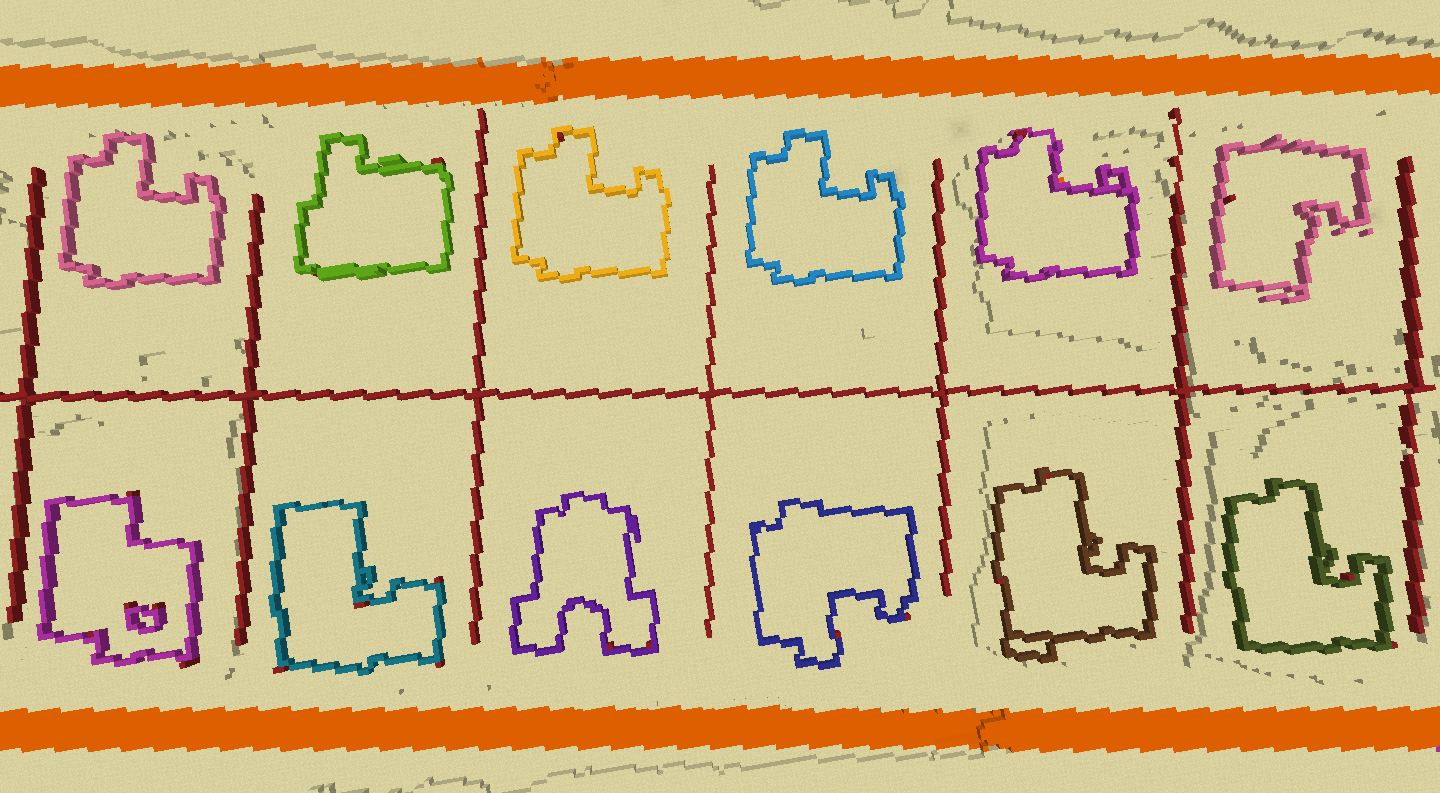
12 outlines down. Can you spot how many unique floor plans there are? I count 5, but I can tell there's a couple new ones in the rest of this block.